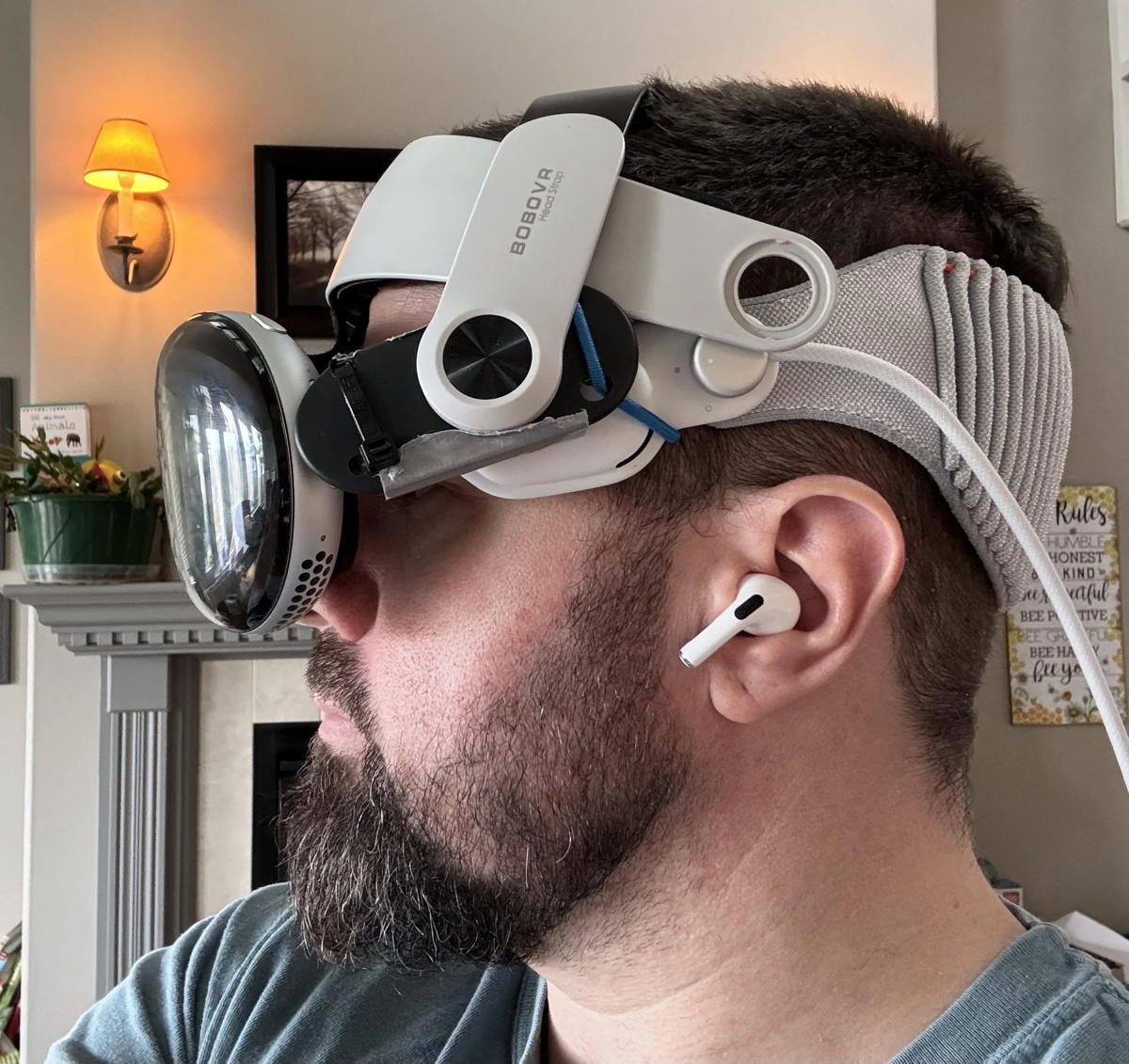Early Apple Vision Pro Users Find Pitfalls, Hidden Gems

Early users of Apple Vision Pro find self-repair difficulties, unexpected gems as platform gets ChatGPT app and YouTube ‘on the way’
An iFixit teardown of Apple’s Vision Pro mixed-reality headset has found it is almost impossible to fix at home, as early users and reviewers discover hidden gems and pitfalls for the $3,499 (£2,790) device, which was released in the US on Friday.
Self-repair experts iFixit said the device’s front-facing EyeSight screen was an “achilles heel” that added to the complexity of taking the device apart for repairs, to the point that it was almost impossible for a home user.
The complex screen, which sometimes displays an rendered image of the user’s eyes, uses a lenticular display made up of three layers that are intended to create a three-dimensional effect.
iFixit echoed early users’ comments on social media, saying the screen adds complexity and weight to the head-mounted device without adding much value.

Added complexity, weight
“It’s dim, it’s low-resolution, and it adds a lot of bulk, weight, complexity, and expense to the most weight-sensitive part of the headset,” the firm wrote in its report.
“We’re sure bringing it to market was a difficult decision,” iFixit added.
The company said it was impressed overall with the way the Vision Pro was put together.
“Apple has managed to pack the power of a Mac, plus the performance of a new dedicated AR chip, into a computer that you can wear on your face,” the report said.

No hard reset
Another major pitfall being discovered by some is that if users forget the access code used to unlock the device – typically a series of digits – it cannot be reset without physically returning it to an Apple Store or to Apple.
This is different from other Apple devices, with the Apple Watch, for instance, allowing users to perform a hard reset and set it up again from scratch.
On Apple’s community forum one customer said he had spoken with an agent who had “had to deal with a lot of angry customers” frustrated about the issue.
Other users discovered tricks that they said made the headset unexpectedly more appealing, such as using a smaller light seal – the soft band around the sides of the display that blocks light from the outside – or removing the light seal entirely.

Field of vision
Several users said on social media that this unexpectedly reduced the Vision Pro’s weight and increased its field of vision.
“It looks like you just wearing glasses with thick frame. You have full peripheral sight as well,” one user wrote.
“The FOV is incredible! THIS is what I was hoping for,” another wrote.
Several users said they had adapted a popular third-party head strap made by BoboVR for Meta Platforms’ Oculus devices in order to wear the Vision Pro comfortably without the light seal, with others saying they eagerly awaited third-party straps specifically made for Apple’s device.
chat has now entered the 3D world.
you can find it in the visionOS App Store. pic.twitter.com/TethfMEc9j
— ChatGPT (@ChatGPTapp) February 2, 2024
YouTube, ChatGPT
The generally positive reception for Apple’s pricey new device appears to have encouraged some companies to make apps available for it, after hesitating to do so at launch, with OpenAI releasing a VisionOS ChatGPT app and Google’s YouTube saying it had a VisionOS app on its “roadmap”.
The Vision Pro can use iPad apps by default, but a number of companies, including YouTube, disabled their iPad apps from running on the device.
OpenAI posted a video on social media platform X showing a Vision Pro user asking ChatGPT for an explanation of semiconductors and receiving a rapid response.
Like the firm’s other mobile apps, ChatGPT for VisionOS allows users to input queries using voice commands.